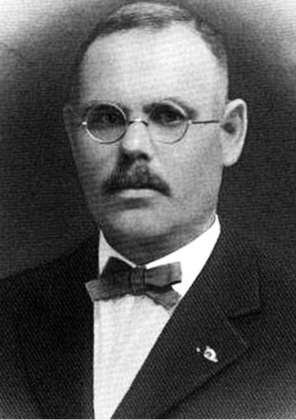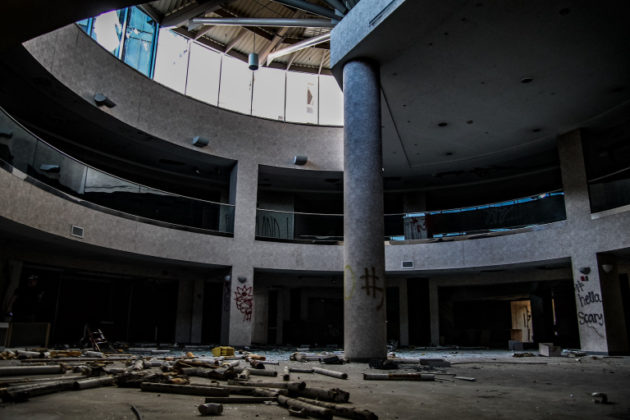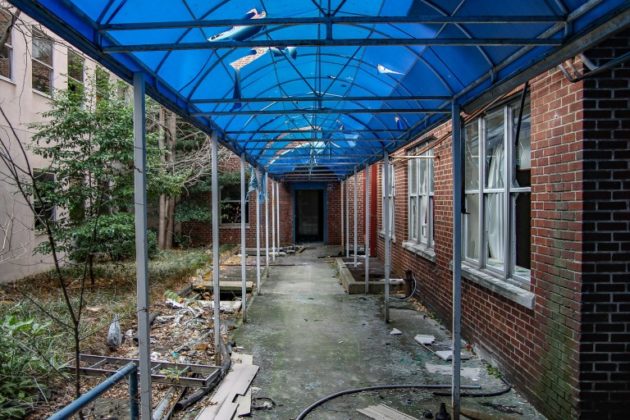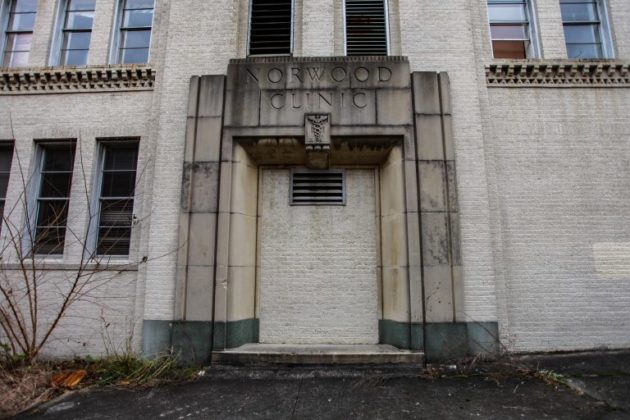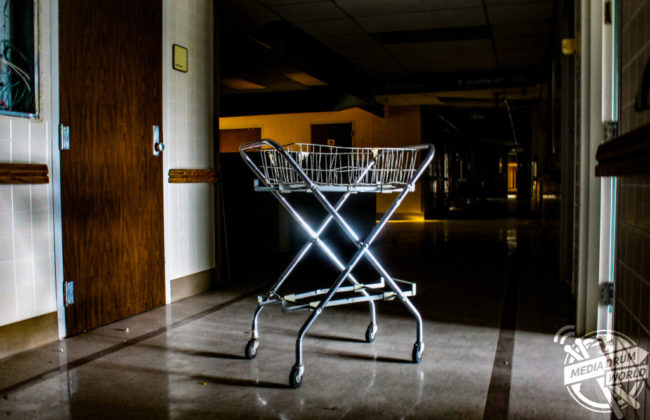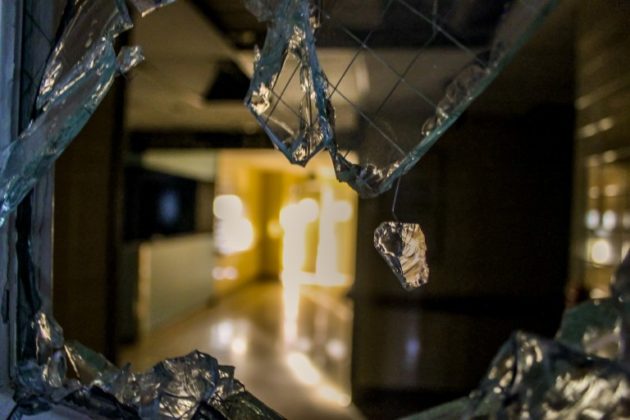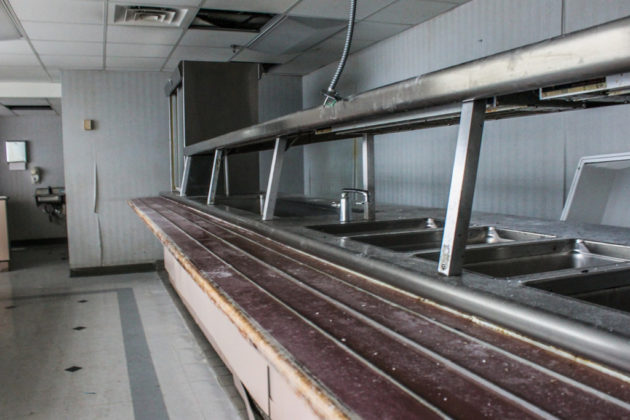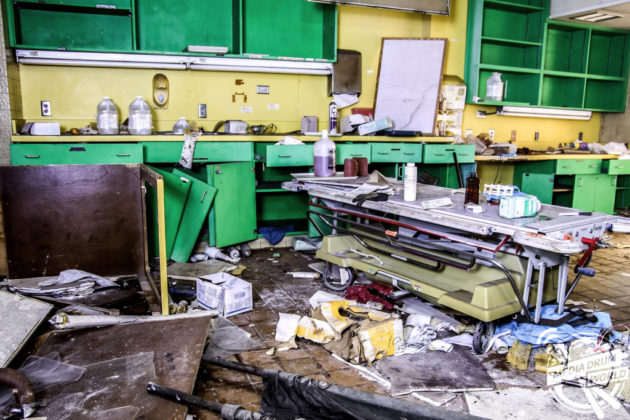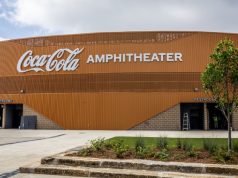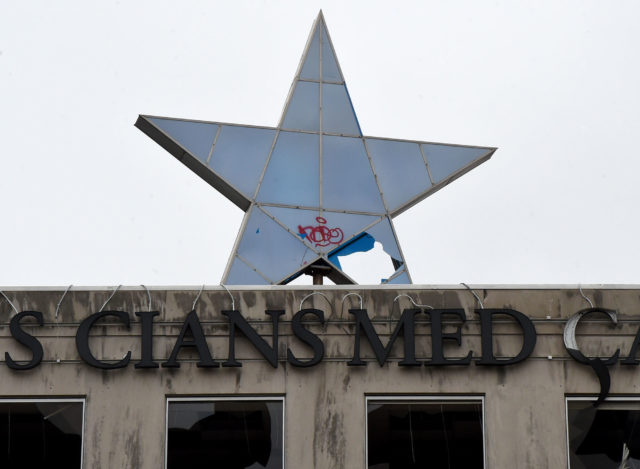
Times Staff Report
The iconic blue star atop Carraway Hospital placed on the roof during Christmas in 1958 will remain part of any renovation of the site, developers say.
A group of former Carraway employees have raised their own money to help preserve the star, said Brian Wolfe, chief development officer for Corporate Realty—a local commercial real estate firm that handles everything from site development and construction to marketing and management.
The former hospital site runs along Carraway Boulevard, between 13th Avenue North and 20th Avenue North. Carraway closed in 2008. The site is sandwiched between several neighborhoods near the northern edge of downtown — Norwood, Druid Hills, Evergreen and North Birmingham.
The hospital officially closed on October 31, 2008 after 100 years in business.
“I think we do have to tell a story about what happened there in terms of the Carraway legacy and I think that’s something we want to kind of weave through the branding and weave through the story of what happened on that site,” said Wolfe, “because it is one that we need to highlight in our history of Birmingham. And I think we’ll do that in some way with the star and in our branding of the site.
Carraway History
In 1908, Dr. Charles Carraway built a 16-bed hospital and office next to his home in Pratt City. He named it Carraway Infirmary. He financed the facility by contracting with Birmingham’s industrial employers to provide health care to workers’ families based on a monthly fee. Businesses would pay $1 per employee or $1.25 per family for treatment. Dr. Carraway would even make house calls in his 1903 Cadillac.
In 1917, Carraway purchased a lot on the corner of Sixteenth Ave. and Twenty-Fifth Street, and moved his practice to the present location in Norwood, renaming it Norwood Hospital.
Inspired by Charles and William Mayo of the Mayo Clinic in Minnesota, Carraway brought in other doctors to practice under one medical group that would be incorporated in 1926 as the Norwood Clinic. The clinic became Alabama’s first multi-specialty medical group practice. The hospital added an additional nursing wing in 1949 with a $200,000 federal grant.
After Dr. Charles Carraway suffered a stroke in 1957, his son, Dr. Ben Carraway, was appointed in his place as Chairman. Under his guidance the hospital, then known as Carraway Methodist, grew from 256 beds to 617 beds. The Purcell Wing opened in 1957 and was the first of many renovations of the medical center. Now a Birmingham landmark, the notable blue star was placed on the roof during Christmas in 1958. Dr. Charles Carraway died in 1963 and is buried in Elmwood Cemetery.
Civil Rights Era
Like most of Birmingham during the 1960s, Carraway Hospital was segregated. During the Civil Rights movement in 1961, white Freedom Rider James Peck was brutally beaten with pipes, key rings and other objects used by several members of the Ku Klux Klan in Birmingham. Peck needed medical attention badly and was rushed to Carraway Methodist Medical Center and was refused treatment by staff members. He was then taken to Jefferson Hillman Hospital where he received 53 stitches to his head alone. Carraway hospital faced scrutiny for years to come for refusing to treat Peck. Despite the fact that the hospital was racially integrated by 1968, accusations of racial discrimination persisted against the facility into the 1970s.
Expansions
The $27 million Goodson Building was completed in 1974, with Charles Carraway’s 1903 Cadillac on display in the lobby. Throughout its history, Carraway Hospital remained a leader in medical care. In the 1980s, the facility added the only Level 1 Trauma Center in Birmingham, three Lifesaver helicopters, a hyperbaric oxygen therapy department, a sleep center, and wound care center. The Lifesaver helicopter program carried 30,000 patients as part of Carraway Hospital, and was one of only 5 percent of emergency flight programs that placed physicians on every flight.
Financial Difficulties
Carraway Hospital began facing financial difficulties in the early 2000s. The hospital began looking for a buyer in 2001. During that time, the chairman was the founder’s grandson, Dr. Robert Carraway. The Birmingham News blamed the declining Norwood neighborhood and decades of choosing patients over profits for the institution’s financial demise. In September 2006, Carraway Hospital filed for Chapter 11 bankruptcy protection, with ownership being placed up for auction. A group of doctors bidding as Physicians Medical Center LLC submitted the highest bid of $26.5 million.
After the buyout, the new owners changed the name in early 2007 to Physicians Medical Center. The hospital was able to turn a profit for the first time in many years in June 2008, but the newly found success was short-lived. By October 2008, Carraway was unable to make payroll. The hospital officially closed on October 31, 2008 after 100 years in business.
In 2009, a South Korean investment firm proposed to buy Carraway Hospital and reopen it as a training center for nurses. That plan never materialized. The Lovelady Center, a nonprofit women’s rehab center, purchased Carraway Hospital for $6 million in 2011.
The Lovelady Center planned to spend $15 million over three years to convert the 52-acre campus into a multi-use development that would include the rehab center, a hotel, emergency room, pharmacy, and a long-term medical care center. The finished project would be called Metro Plaza.
The neighborhood committees around Carraway opposed the Lovelady Center moving into the vacant hospital. They believed a transitional housing center would be a step back for the community, and not a beneficial use of the massive complex.
In 2018, the Lovelady Center sold the 50-acre property to Corporate Realty Development and plans were made to transform the former hospital campus into a mixed-use development that will likely include single-family residences, multi-family residential, retail and restaurants, offices, hotel and an entertainment venue.
Sources: abandonedsoutheast.com, Wikipedia.org, dailymail.co.uk.


